 This work is licensed under a
Creative Commons Attribution-NonCommercial-ShareAlike 2.5 License EXCEPT the images of damaged mites and the bees chewing a pupa: © Rodger Dewhurst 2006 and 2008.
This work is licensed under a
Creative Commons Attribution-NonCommercial-ShareAlike 2.5 License EXCEPT the images of damaged mites and the bees chewing a pupa: © Rodger Dewhurst 2006 and 2008.
vision of varroa tolerance in Cornwall, the peninsula
In 2002 James Kilty (Secretary), Lol Oakes (Chair) and Rodger Dewhurst (Treasurer) founded the Cornwall Bee Improvement and Bee Breeders Group. We recruited 17 new members in the first year bringing the total of colonies to 152 rising to over 30 in 2006 with around 300 colonies and 40 in 2012, throughout the length and breadth of Cornwall. Members are drawn from both the main Beekeepers' Associations in Cornwall and from the Bee Farmers' Association and the group is open to anybeekeeper, irrespective of whether they belong to an Associaion or not. The group is affiliated to BIBBA, the Bee Improvement and Bee Breeders Association, which has an international membership. The vision is to use the advantages of the peninsula to provide an increasingly protected zone of improvement which can expand up the peninsula.
selection for good temper
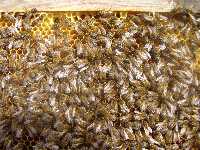
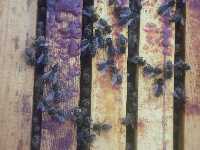
Hitherto, bee improvement has involved selecting for characters for temperament and the beekeeper's management style which suited the local environment. Temperament is usually thought to involve 4 main characters: non-stinging, non-following, non-rising and quiet on the comb (see picture) (in order of priority). What this means is that the opposite characters are deemed undesirable: stinging, following, rising and running on the comb. It is taken that the first of these is connected with the state of the queen, whereas the last three are inherited. What this means is that replacing a queen from a stinging colony will usually cure the problem immediately, whereas the last three continue until the new queen's progeny have replaced the previous queen's daughters, from 6 weeks on, fading to as many as 10 weeks later.
selection for local thriving
The other characters selected have depended on the preference of the beekeeper. In West Cornwall, weather patterns have favoured the survival of bees with characters corresponding to the native British honeybee, Apis mellifera mellifera. Importation of Italian (A.m. ligustica), Slovenian (A.m. carnica), Caucasian (A.m. caucasica) and Buckfast (a cross between races which have included African bees) has left traces of all races within the genetic heritage of the local bee. This is because we favour open mating, whereby queen bees mate in flight, often traveling several kilometres to a drone assembly, especially in prolonged periods of fine weather. Whilst the weather is so variable, drone assemblies are infrequent, though sometimes are local, and two factors limit mating to drones with native or near-native characters. The first is that only drones willing to fly in lower temperatures or unfavourable weather, such as drizzle, will be available to queens simultaeously willing to leave their colony on a mating flight. The second is the ability of the bees to mate close to the apiary, “Apiary Vicinity Mating”. Our preference for open mating is based on the assumption that we should do our best to maintain the genetic pool along with the variations in strains acclimatised to the diverse habitats and locations in Cornwall.
native characters
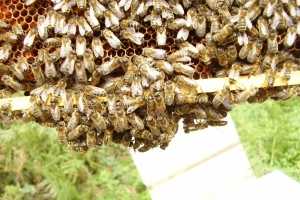
It is our policy to favour these native characters for a number of reasons. Low temperature flying and longevity in particular, more than make up for the tendency of the native bee to be non-prolific. What this means in practice is that the Italian characteristic of being prolific, and producing large sized colonies works well only in long periods of warm weather, such as we occasionally get in late May and summer, sometimes starting in March or April for up to 4 weeks. These periods are more common further east in the U.K. and uncommon here, with short periods of warm humid conditions prevailing. The native bees respond very rapidly to nectar flows and short periods of good weather which can result in good crops. we can normally expect 3-5 supers of honey from our breeders and their best daughters, whereas others typically yield 2. In a reasonable year we can consistently get an average of 160lb honey from colonies in an apiary - my very best yield was slightly over 200lb. All these are from static hives. Yields can of course be increased if colonies are moved to oil seed rape or heather.
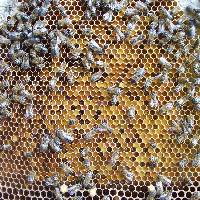
Other characters enable our bees to survive long periods of confinement: excellent pollen collection and storage; responsiveness to poor weather by reducing brood rearing; frugality in use of stores, particularly in winter. This last arises because of the tendency for native bees to fatten up on autumn pollen and use this fat reserve instead of honey stores to keep warm throughout winter.
selection for varroa tolerance
We have now added to this list, any character which seems to point in the direction of varroa limitation. In the wild, Apis cerana, the eastern honeybee, survives by limiting varroa numbers to less than about 800, a non-lethal level. Above about 1000 varroa in a colony, the transmission of lethal viruses may be triggered. Above about 2500 varroa, many colonies will succumb sooner or later. This is particularly so in late summer and autumn, when brood numbers reduce to levels below the number of varroa. This means that more than one varroa enters the cell of a larva to breed. Since the varroa also incubate some viruses and pass them on to the larvae as they feed, larvae are increasingly likely to succumb as the numbers of varroa increase and the numbers of larvae decrease. Winter losses can be high unless treatment is timed correctly.
characters of varroa tolerance
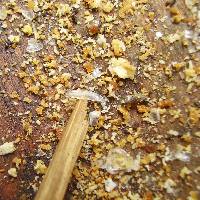
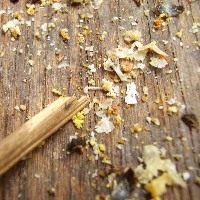
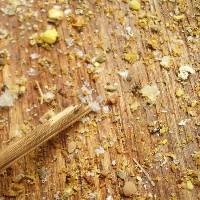
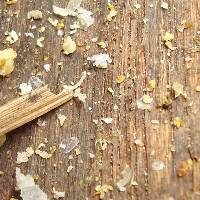
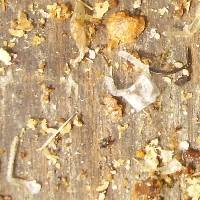
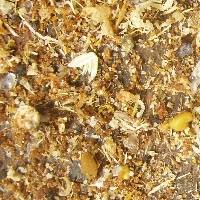
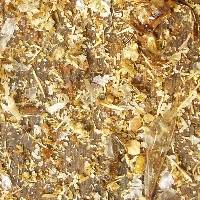
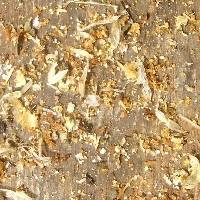
We have seen bees removing pupae along with the varroa on them (and also wax moth larvae). We have seen varroa on the collecting tray damaged by grooming, including obviously lethal damage. We have seen intermittently high varroa falls, accompanied by damage to the mites. We have found colonies with very high and very low mite falls. This suggests that individual colonies vary in their tendency to grow and maintain varroa populations. We have also found colonies with higher mite counts with no obvious viral damage and colonies with lower mite counts with obvious mite damage. This suggests that our colonies vary in their susceptibility to viruses.
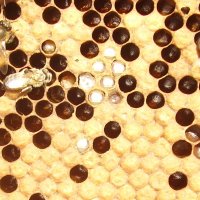
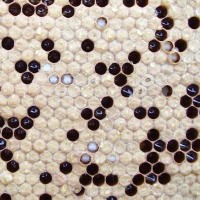
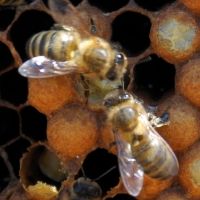
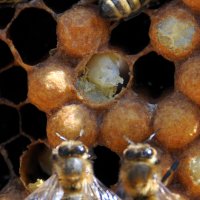
We have seen workers chewing out pupae infested by varroa, coupled with piles of pupal pieces such as antennae together with damaged mites on the varroa collecting tray. (We know that bees with VSH (Varroa Sensitive Hygiene), formerly known as SMR (Suppressed Mite Reproduction) chew out pupae at about the purple eye stage - see video produced at ARS/USDA). (We also recognise the reports from individuals and groups in other countries of bees with these characters from other programmes of selection). These pieces include antennae, legs, pupal casings and purple eyes. Often there are such pieces without mites too. Rodger Dewhurst has reported a correlation between his selection criterion that bees bite the beekeeper and hygienic behaviour of all observed kinds mentioned, particularly mite damage. He has been using this criterion for several years on the grounds that this is one of the two primary defences of the honeybee. Examination of damaged mites suggests that the pincer action of the tips of the mandibles produces dimples on varroa and the scissor action of the main part of the mandible is responsible for slicing varroa, sometimes into two pieces. We know that John Dews with Albert Knight has been selecting breeders with this trait as had Wallner (Varroa Kill Factor) and other groups have reported such mite damage. We have also seen bits of spiders and earwigs on the tray, suggesting that these are also chopped into pieces. Rodger has observed bees "auto-grooming" varroa off themselves after a dance which recruits others around them! We have also seen bald brood without evidence of wax moth and consider it likely that this is the same trait observed in the US, where bees detect mites on the pupa's head and can remove them without digging through the pupa. An additional factor is the presence of the greater wax moth in colonies. This is rampant in West Cornwall. Some colonies have virtually none and no evidence on the varroa collecting tray of larvae or faeces. Surely a colony able to remove varroa will easily deal with wax moth!
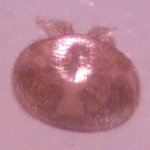
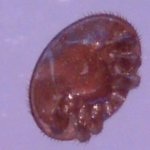
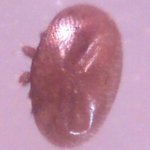
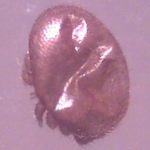
Here, then, are groups of characters which we can select. In practice if we can find bees with a complex of varroa reducing behaviours, then these are the bees to breed from. The opposite, to ignore this and even breed from bees which have no such characters in the presence of bees with such characters seems to make little sense. To ignore this possibility is equivalent to saying “We do not wish to seek a bee that can defend itself. We'd rather rely on treatments decided by others.” Beekeepers can empower themselves by believing in their bees and assisting them to adapt. Since the proportion of bees with varroa reducing behaviours is initially small, then cooperation between beekeepers is essential where they have less than, say 25 colonies.
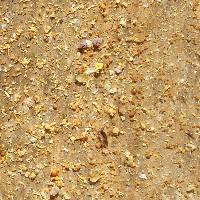
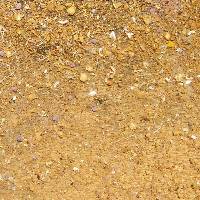
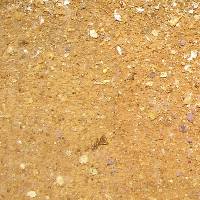
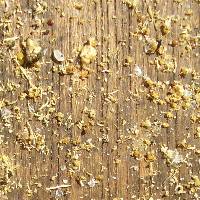
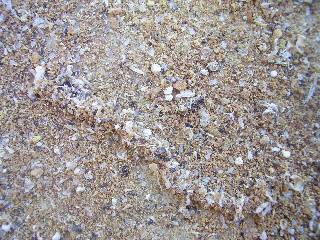
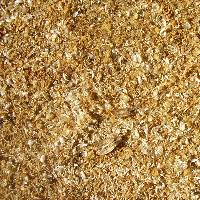
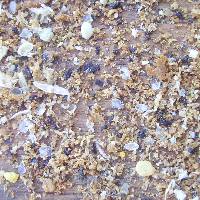
breeding for varroa tolerance
So far, we have been selecting as breeders, colonies which seem to be superior at limiting varroa, to an observable degree. For example, untreated colonies which survive a winter untreated in autumn, build up rapidly in the spring and bring in a large spring surplus have been used as breeders. In contrast, many untreated colonies fail to thrive and need assistance in the spring to survive, by a spring treatment and perhaps by supplementing the stock with a frame or two of bees and brood from a strong colony. Others fail completely showing marked viral damage such as shrivelled wings and paralysis and dead unhatched brood. Even with spring treatment and the addition of brood, many have shown high mite counts later in the year. Clearly the queens in such colonies are replaced as soon as a newly bred queen is available.
Other colonies have demonstrated relevant defensive behaviour and passed this on to daughter colonies, including the "biting the beekeeper" character (observed by Rodger Dewhurst). This behaviour can be observed using minimal disturbance, minimal smoke, and no gloves, though you may see bees tugging and chewing at latex gloves. In my own case, the proportion of colonies having medium to high pupal damage has increased markedly without using this selection criterion, though I do see it in my colonies and a few have no wax moth faeces at all, others only little wax moth with no larvae on the tray (still a minority). I have not myself added this character to my record sheet, so I cannot note any correlation between biting and pupal debris.
Currently we are selecting parent colonies with mite damage and pupal damage which includes one colony left untreated for 2-3 years, having been treated lightly even then. Rodger is also identifying potential breeders using his "compression test". On removing supers for the harvest, colonies compressed to one brood chamber may show marked increase of the % damaged (and live) mites on the varroa collecting tray after compression compared with before. This % can be higher than the threshold for survivability without treatment of 60% determined by Wallner. Given the preponderance of chalk brood, breeders must show low or no chalk brood (see update 2015). Update for 2022 in preparation.
We have not yet figures which indicate the superiority of daughter colonies, only indications that this is so, but this is a long haul – “work in progress” as they say. Nor can we say we have colonies surviving the critical 3 years without help. If successful, members will flood Cornwall with drones which will pass on these characteristics to non-members as well as members!! Cornwall being a peninsula, gives us a better chance than most other areas of the UK, though we still seek sheltered locations which may confine queens and reduce drone influx.
We have a protocol for VSH to assist members determine if their colonies might have VSH. It will be amended in the light of discussion in the group.
getting on board
For details of the paper designed to attract new members see Varroa Tolerance Project and return by using your browser's “back” control. If you keep bees in Cornwall, whether or not you actually live in Cornwall, and are interested in joining our group, email James in the first instance and say where you live and keep bees, how many hives you have and your experience of bees and beekeeping. You can apply to join the discussion group using the form below. This will keep you up to date with what is going on, when and where demonstrations and queen rearing activities are going on so you can join in if you want and get help to further your own selection and rearing.
You might also like to read an article on working together to improve our bees, published in both Cornwall Beekeepers' Associations' Newsletters. This was designed to encourage more beekeepers to get involved in breeding better bees.
Beekeepers Quarterly and SICAMM
An edited version of this page was published in the Beekeepers Quarterly 85 Sept 2006 at the request of the editor, as a joint paper with Rodger Dewhurst, my compatriot in this venture. Rodger has received the Josef Stark Award in recognition of his work.